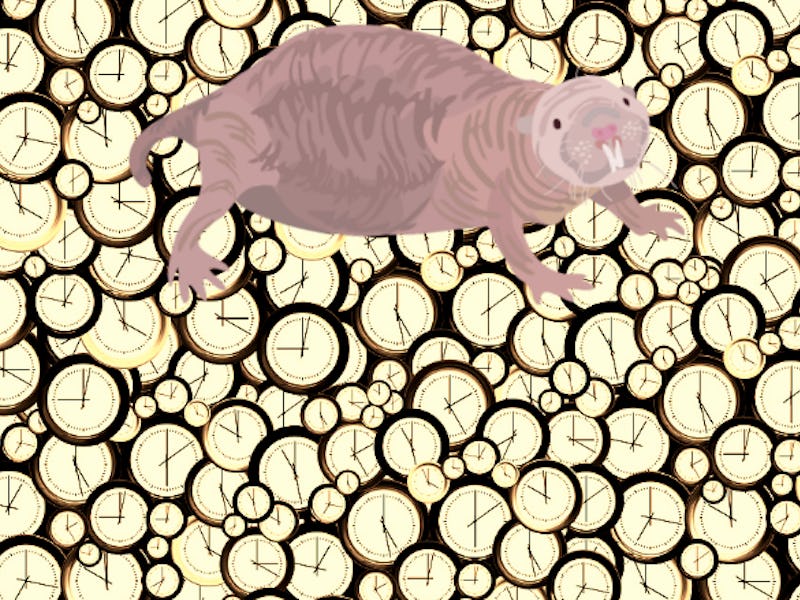'Non-Aging' Naked Mole Rats Seem to Defy the Laws of Mortality
Scientists think they hold to key to living forever.

We get old and then we die. At least, that’s the best-case scenario for humans: Each encroaching year means you’re one step closer to the grave. This fact of life is academically laid out by the Gompertz-Makeham law of mortality, which states that our chances of death increase exponentially as time wears on.
At least one animal, however, defies Gompertz’s law: the naked mole rat. In a study released Wednesday, scientists explain that a naked mole rat’s risk of dying does not appear to increase with age. While mice in captivity only live an average of four years, naked mole rats can live to be 30, with some breeding females remaining fertile until they die.
“This absence of hazard increase with age, in defiance of Gompertz’s law, uniquely identifies the naked mole rat as a non-aging mammal, confirming its status as an exceptional model for biogerontology,” the researchers write in the journal eLife.
Naked mole rats are the longest-lived rodent.
While some scientists not associated with the study warn that more data are necessary before the subterranean rodents are ruled out as non-aging, the study’s lead author Rochelle Buffenstein, Ph.D., says her team’s 3,000 data points show a clear picture of an animal defying Gompertz aging.
“To me, this is the most exciting data I’ve ever gotten,” the comparative biologist told Science magazine. “It goes against everything we know in terms of mammalian biology.”
In this study, Buffenstein, who works at Calico, a Google-backed longevity research institute, worked with her team to analyze 30 years of naked mole rat data collected in her lab, including each rat’s date of birth and date of death as well as data on whether each rat was killed in an experiment or given away to another researcher. Altogether, they looked at data on 3,299 naked mole rats.
On average, the animals didn’t show the same weakening homeostasis and increased vulnerability that affects other organisms as they age. After the naked role rats reached their sexual maturity at six months old, their daily chance of dying was about one in 10,000 — and it stayed that way for the rest of their life.
It’s not clear what’s going on here. We know that mole rats are definitely sturdy creatures and have unusual biology: the notably coldblooded mammals (yes, you read that right) can survive for 18 minutes without oxygen and are highly resistant to cancer, but whether that has anything to do with their unusually long lives remains to be seen. It’s possible their 30-year maximum lifespan could be the result of their high rates of DNA repair and high levels of molecular chaperones, which help DNA fold and unfold properly, but more data is needed to confirm any link.
Regardless, naked mole rats, already the longest-lived rodents known to scientists, are a fascinating model to study longevity. Scientists are hopeful that they may teach us to improve our own longevity as we better understand what exactly makes these ugly and defiant critters tick.